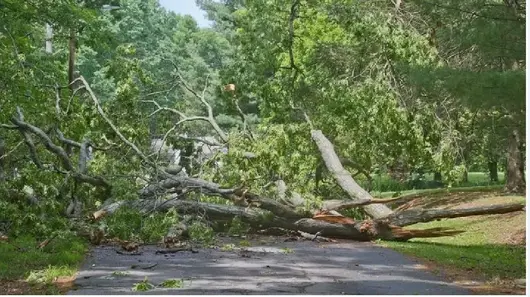By Sujit Bhar
What happens when a senior government officer steadfastly refuses to pay heed to orders from the government and allows the felling of trees, possibly for gain, in the land that has been historically held by certain people?
The former deputy conservator of forest of Madikeri division, Karnataka, who, it has been alleged, had authorised the illegal felling of nearly 800 trees in the K Nidugane village, has retired. However, on August 20, 2024, the government ordered a penalty, deducting five percent from his pension for two years.
The issue, however, has gained further traction and the National Green Tribunal (NGT) has taken suo motu cognizance of the matter relating to the penalty. The petition is registered suo motu on the basis of the news item that appeared on dated August 30, 2024.
The news report shows how arrogant such officials can become. According to the article, despite a showcause notice and a charge sheet in November 2019, and an inquiry report in November 2023 upholding the charges, the deputy conservator failed to send in an adequate response. It was possibly the last straw and the government thereafter ordered the penalty of deducting five percent from his pension.
While the penalty seems a trifle on the lenient side, the details found in the article published says there were some further incriminating reasons to pursue the case further. It said that initially the Karnataka Housing Board had planned to build a residential complex, but activists alleged illegal diversion of forest land for a resort.
The land in question was “Bane” land. As all Bane areas are statutory forests, use of the same for non-forest purposes requires clearance from the Union government.
There has been a lot of controversy regarding Bane land in the state. Not so long ago, the Karnataka government had asked the district administration in Kodagu to conduct a survey of Jamma Bane land in the district.
What is Jamma Bane land? This type of landholding has its origins in the history of the state. The origin can be found in the etymology of the word. “Jamma” originates from the Sanskrit word Janma, which signifies “hereditary by birth”. According to JB Lyall, a British authority on tenures in Coorg, the origin of Jamma dates back to a military tenure where individuals held land by paying half the assessment as compensation for military service.
It has been said that the allocation of Jamma land was primarily executed through sannads, predominantly by the Coorg Rajas (1600 AD to 1834 AD) and, to a lesser extent, by the British until 1895. These grants were bestowed upon various local communities, including Kodavas, Amma-Kodavas, Heggades, Airis, Koyavas, Moplas, and Gaudas.
Jamma-holders bore the responsibility of responding to external threats or addressing internal disturbances, often being deployed as both guardians of the treasury and defenders against external aggression.
This type of landholding, however, had flaws, primarily because of the absence of authentic records. The initial reliable revenue records, compiled by Lingaraja and Chikkaveeraraja between 1812 and 1824, shed light on the subject. According to this Jamma lands comprised both wetlands for paddy cultivation and adjacent highlands known as Bane land. Initially utilized for cattle grazing and exempt from assessments, these Bane lands have since been transformed into coffee estates, though much are supposed to be statutory forests.
The indigenous people of Kodagu have consistently faced challenges from successive Karnataka governments regarding the ownership of Jamma lands, the primary land tenure in the district.
This lack of records has resulted in the Jamma Bane landholders not being able to prove title, resulting in not being able to secure loans from or avail themselves of government facilities.
This opacity in landholding records has resulted in the Bane land (the highland adjoining Jamma land) being allocated for forestry. Hence the government, too, has not been very clear on the pattern of holding of Jamma land. Such land, therefore, falls within the dispute that has existed for centuries and people have taken advantage of this, despite a government policy to maintain status quo regarding such lands.
According to the article, despite clear directions from the government, the former deputy conservator allowed the felling of trees. It has also been alleged that the officer in question failed to object to the conversion of land for commercial purposes. He also failed to call for a joint survey of the area to determine the land’s status. The permission for felling was issued in a letter instead of the regular order.
The issue has now seen a violation of the provisions of the Forest Conservation Act, 1980, and the Environment Protection Act, 1986. This is being, therefore, taken up by the NGT principal bench of Justice Prakash Shrivastava, Justice Arun Kumar Tyagi and Dr. A. Senthil Vel.
The bench has also impleaded the following as respondents in the matter:
- Principal Chief Conservator of Forest, Karnataka.
- Ministry of Environment, Forest and Climate Change.
- District Magistrate, Kodagu.
Notices have been issued.
Since the matter relates to the Southern Zonal Bench, Chennai, therefore, the bench has transferred the matter to the Southern Zonal Bench for appropriate further action. The matter is listed for November 4, 2024.


